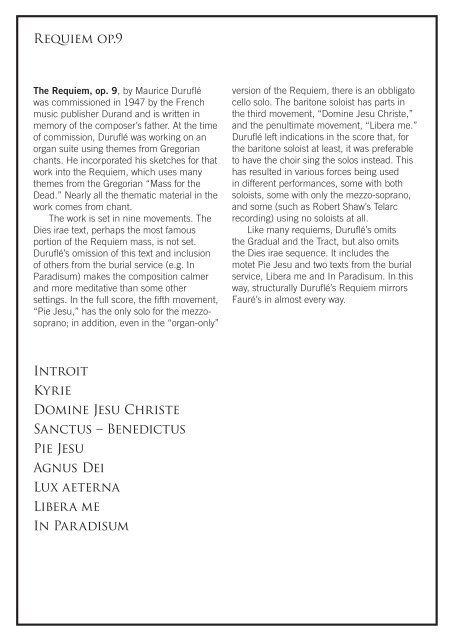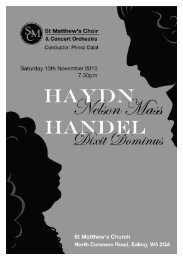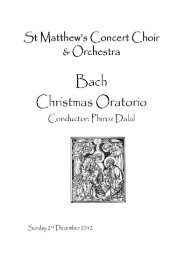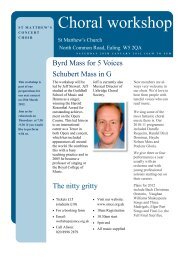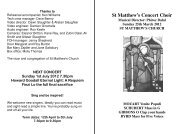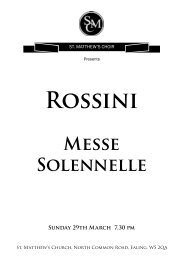You also want an ePaper? Increase the reach of your titles
YUMPU automatically turns print PDFs into web optimized ePapers that Google loves.
Requiem op.9<br />
The Requiem, op. 9, by Maurice Duruflé<br />
was commissioned in 1947 by the French<br />
music publisher Durand and is written in<br />
memory of the composer’s father. At the time<br />
of commission, Duruflé was working on an<br />
organ suite using themes from Gregorian<br />
chants. He incorporated his sketches for that<br />
work into the Requiem, which uses many<br />
themes from the Gregorian “Mass for the<br />
Dead.” Nearly all the thematic material in the<br />
work comes from chant.<br />
The work is set in nine movements. The<br />
Dies irae text, perhaps the most famous<br />
portion of the Requiem mass, is not set.<br />
Duruflé’s omission of this text and inclusion<br />
of others from the burial service (e.g. In<br />
Paradisum) makes the composition calmer<br />
and more meditative than some other<br />
settings. In the full score, the fifth movement,<br />
“Pie Jesu,” has the only solo for the mezzosoprano;<br />
in addition, even in the “organ-only”<br />
version of the Requiem, there is an obbligato<br />
cello solo. The baritone soloist has parts in<br />
the third movement, “Domine Jesu Christe,”<br />
and the penultimate movement, “Libera me.”<br />
Duruflé left indications in the score that, for<br />
the baritone soloist at least, it was preferable<br />
to have the choir sing the solos instead. This<br />
has resulted in various forces being used<br />
in different performances, some with both<br />
soloists, some with only the mezzo-soprano,<br />
and some (such as Robert Shaw’s Telarc<br />
recording) using no soloists at all.<br />
Like many requiems, Duruflé’s omits<br />
the Gradual and the Tract, but also omits<br />
the Dies irae sequence. It includes the<br />
motet Pie Jesu and two texts from the burial<br />
service, Libera me and In Paradisum. In this<br />
way, structurally Duruflé’s Requiem mirrors<br />
Fauré’s in almost every way.<br />
Introit<br />
Kyrie<br />
Domine Jesu Christe<br />
Sanctus – Benedictus<br />
Pie Jesu<br />
Agnus Dei<br />
Lux aeterna<br />
Libera me<br />
In Paradisum


